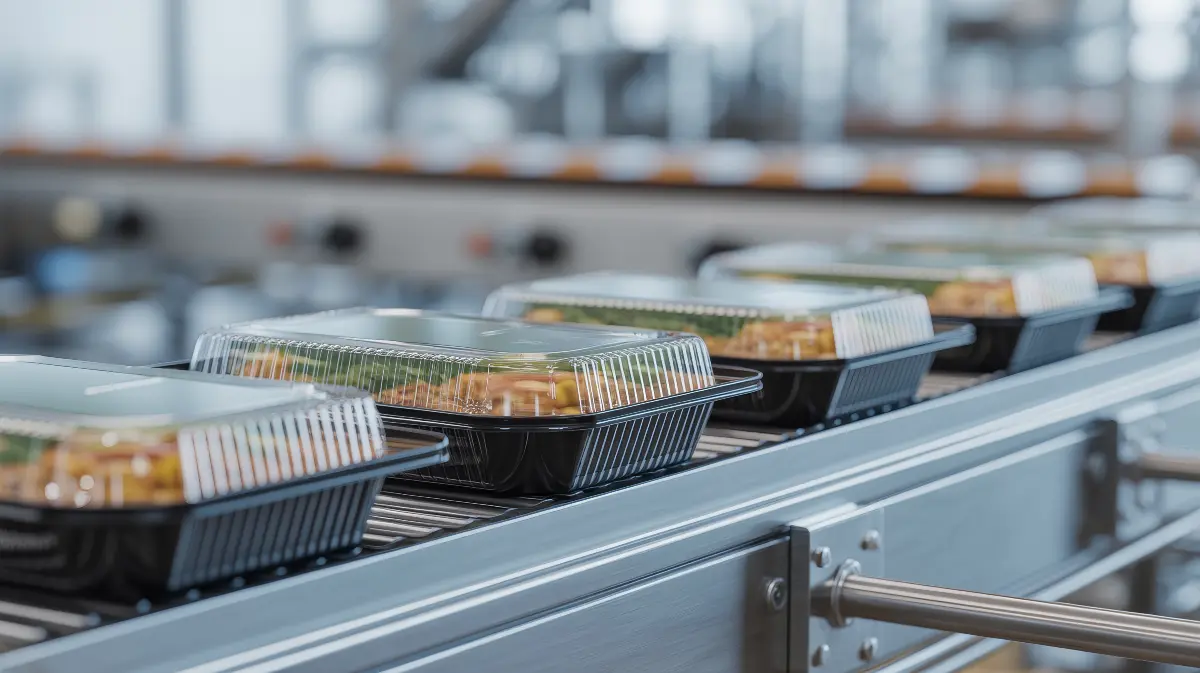How To Slow Food Spoilage And Extend Shelf Life

Food spoilage starts immediately after harvesting, processing, or production. And it affects all food products, including fruits, vegetables, meats, dairy, fish, and baked goods.
This natural process is driven by microbial activity, chemical changes, and physical damage, which gradually reduce food's freshness, palatability, and safety.
When foods are processed - for example when they resliced, ground, or minced - their protective barriers are broken, allowing more oxygen and microorganisms to reach them and speed up spoilage.
Shelf life (the time during which food remains safe and fit for human consumption) varies greatly depending on the food’s properties and the conditions in which it is kept.
What are the main factors affecting the shelf life of food?
The main contributors to food spoilage include:
- Water activity: High-moisture foods, such as fresh meat, seafood, dairy, and cut fruits or vegetables, spoil faster than dry goods like flour.
- pH levels: Acidic foods, like fermented dairy and pickled vegetables, often resist spoilage better than neutral-pH items such as cooked meats and milk.
- Preservatives: Foods like cured meats and jams last longer because preservatives such as salt, sugar, and chemical additives reduce microbial growth.
- Production hygiene: Poor hygiene during farming, slaughtering, or processing can lead to contamination and shorten shelf life.
- Storage environment: Temperature, humidity, oxygen levels, and light exposure in packaging play critical roles.
- Packaging methods: Technologies like vacuum packing and Modified Atmosphere Packaging (MAP) limit microbial growth and oxidation, helping preserve freshness.
The combination of these factors determines how quickly foods spoil. Foods like ground meat and fresh berries, which are moist, neutral in pH, and lightly processed, spoil quickly, while dried, salted, or acidic foods, such as cured meats or pickled vegetables, last much longer.
Chemical and biochemical spoilage
Once fruits and vegetables are harvested or meat is processed, chemical changes affect their structure and quality.
In some cases, these changes are beneficial, such as in dry-aged meat, where controlled spoilage enhances both flavour and tenderness. However, most chemical reactions lead to a gradual decline in food quality.
Chemical and biochemical processes that affect food preservation and quality include:
- Oxidation: Oxygen exposure triggers the breakdown of fats, causing food to develop rancid flavours and off-putting odors.
- Vitamin degradation: Vitamins deteriorate over time, especially when exposed to oxygen, heat, or light, reducing food's nutritional value.
- Lipid hydrolysis: The breakdown of fats into free fatty acids leads to rancid flavours.
- Protein degradation: Proteins break down over time, which leads to texture changes and unpleasant odors.
- Enzymatic browning: Enzymes cause fruits and vegetables to turn brown when they are cut, bruised, or damaged.
Microbial Spoilage
Microbial activity is another major threat to food safety and shelf life. Microorganisms such as bacteria, yeasts, and molds can alter the color, smell, and taste of food, and in many cases, make it unsafe to eat.
Some microbes are naturally present in raw foods, while others are introduced during handling, processing, or packaging.
Without strict processing, preservation, and packaging methods, chemical, biochemical, and microbial spoilage increasingly make food less enjoyable and, eventually, unsafe to consume.

How can we extend the shelf life of food?
Several methods can help slow spoilage and improve food preservation, safety, and shelf life.
Strict hygiene control during farming, processing, and packaging is essential to minimise contamination, while well-designed packaging plays a crucial role in shielding products from moisture, oxygen, and light during transport and display.
Modified Atmosphere Packaging is a widely used technique that alters the levels of gases inside food packaging. By reducing oxygen and increasing protective gases like carbon dioxide and nitrogen, MAP slows microbial growth, oxidation, and other spoilage processes.
MAP is often combined with refrigeration to further delay spoilage. Together, these technologies help maintain the freshness, safety, and quality of a wide range of foods, from fresh produce to meat and bakery products.
Other preservation techniques include freezing, drying, dehydrating, pasteurising, sterilising, irradiation, and fermentation.
By combining several of these methods, producers can greatly improve food preservation, safety, and shelf life, as well as reduce waste and maintain food quality for longer.
Packaging Quality Assurance
When it comes to a complex process like Modified Atmosphere Packaging, selecting the correct type and concentration of gases is crucial to protecting food quality.
Because different foods respond differently to different gas mixtures, maintaining freshness depends on precisely controlling the atmosphere inside the packaging. Imbalances (too much or too little of a gas) can cause food spoilage, affect texture and flavour, and even create food safety risks.
Thanks to modern gas mixing and testing technologies, food producers can ensure consistent packaging quality while extending shelf life.
Gas mixers enable accurate MAP composition. Next-generation 3-in-1 gas, leak, and burst testers can accurately measure gas levels, detect leaks, and perform burst tests in a single sequence, streamlining MAP processes and boosting efficiency. Advanced flow optimisers also help reduce gas consumption without compromising food safety, freshness, or hygiene.
